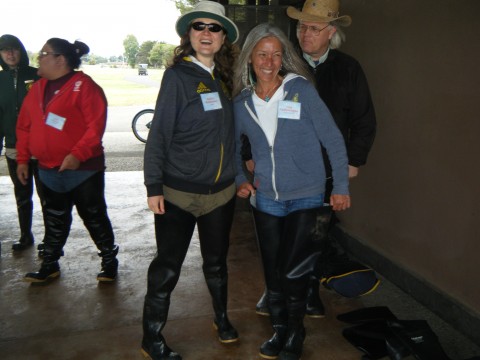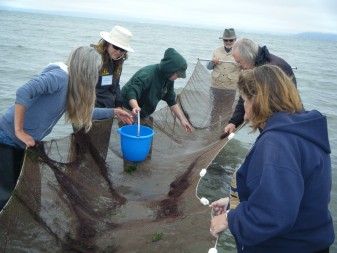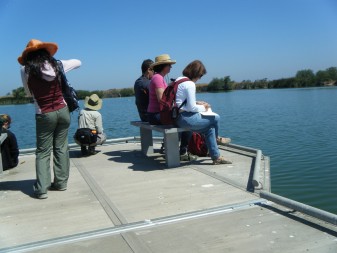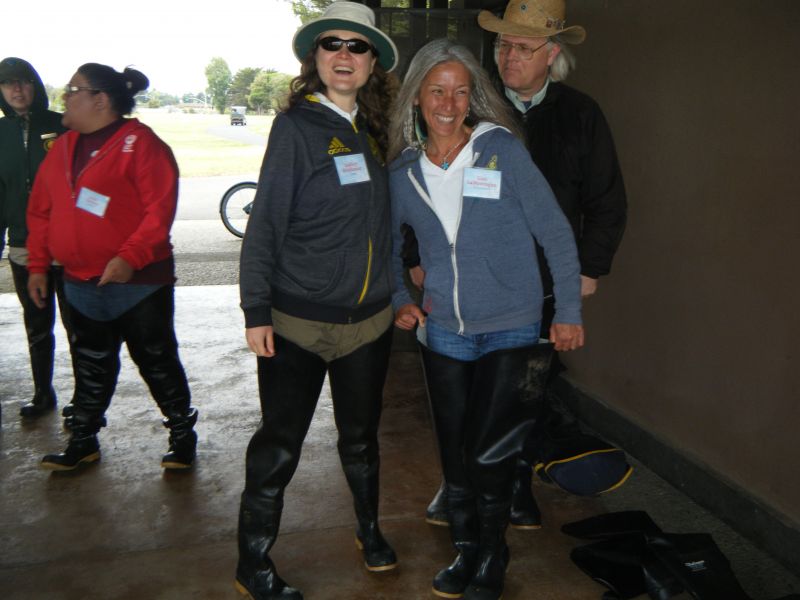
How do teachers spend their time off? Last week they donned hip wader boots, dragged a seine net, slogged in bay mud and paddled canoes on San Leandro Bay to learn about about our amazing bay in this year's San Francisco Bay Area Institute: "California’s Water Resources and Climate Change."
Here’s what their week of science adventures looked like. We gathered the first day at the Crab Cove Visitor Center. The Bay Lab program introduced them to San Francisco Bay ecology. Dragging a seine net through the eel grass beds and mudflats they sampled the fauna. We found arrow gobies, juvenile fish, bubble snails, New Zealand sea snot mollusks, and snail egg masses.

They were identified, tallied and returned to the bay. Teachers also practiced sampling techniques and data analysis for estimating what animals might live in the Bay mudflats. With quadrats in hand they assessed the surface for animal evidence such as ghost shrimp holes, lug worm castings and egg masses, and various holes indicating animal homes. Then they took some mud samples back to the lab and used a sieve and microscopes for further identification of amphipods, worms, gem clams, and more. Armed with this raw data, they then broke up into project groups to work on developing a hypothesis related to San Francisco Bay, climate change and water resources and planned their methods for testing it. They had to present their findings on the final day of class.
The following days we explored Native American life at Coyote Hills along with a freshwater marsh and salt ponds being restored to mudflats. We journeyed on San Leandro Bay in Oakland via canoes the teachers paddled. From the boats they sampled the mix of fresh and salt water and observed human impacts around the Bay from the surrounding watersheds. They then took a ferry to explore Angel Island for a perspective on the Bay-Delta interface.

The finale of the week was the presentation of their group projects. One group hypothesized about potential impacts of sea level rise and discovered areas in their travels over the week that could potentially be lost with a one-meter rise in sea level. The lost areas included both marshes and mudflats along with buildings, trails, and parking lots. Other groups investigated gull behavior, and others compared the natural systems in the different field trip locations. All were well done and a great wrap-up of the week.
